What Is Levelling in Surveying | Types of Levelling in Surveying | Advantages & Disadvantages of Levelling in Surveying

Table of Contents
Introduction to Levelling
Levelling is one of the most important parts of surveying before starting the construction of roads, dams, or any other structures.
It is a branch of surveying which deals with the measurement of the elevation of the point with respect to the datum level above or below the surface of the ground.
In this article, you will get to know about the Types of levelling in surveying, and the advantages, and disadvantages of levelling.
What Is Levelling in Surveying?
Levelling is defined as the art of determining the relative heights or the elevations of different points on the surface of the earth so that the same may be represented on a plan or map. The levelling process mainly deals with the measurements in the vertical plane.
Levelling is a process of taking the measurement of the level of the ground in the vertical plane.
Principle of Levelling
The principle of levelling is to obtain a horizontal line of sight with respect to the vertical distances of the points above or below this line are found.
Objective of Levelling
The objectives of levelling are as follows.
The main objective of levelling is to determine the elevation of given points with respect to some reference line which is known as Datum.
To establish different points at the required elevation with respect to Datum.
The necessity of Levelling.
The levelling process has a prime importance before carrying out any kind of construction on site.
Levelling is used for acquiring the data for designing roads, canals, railways, buildings, dams, bridges, and water supply systems.
Types of Levelling in Surveying
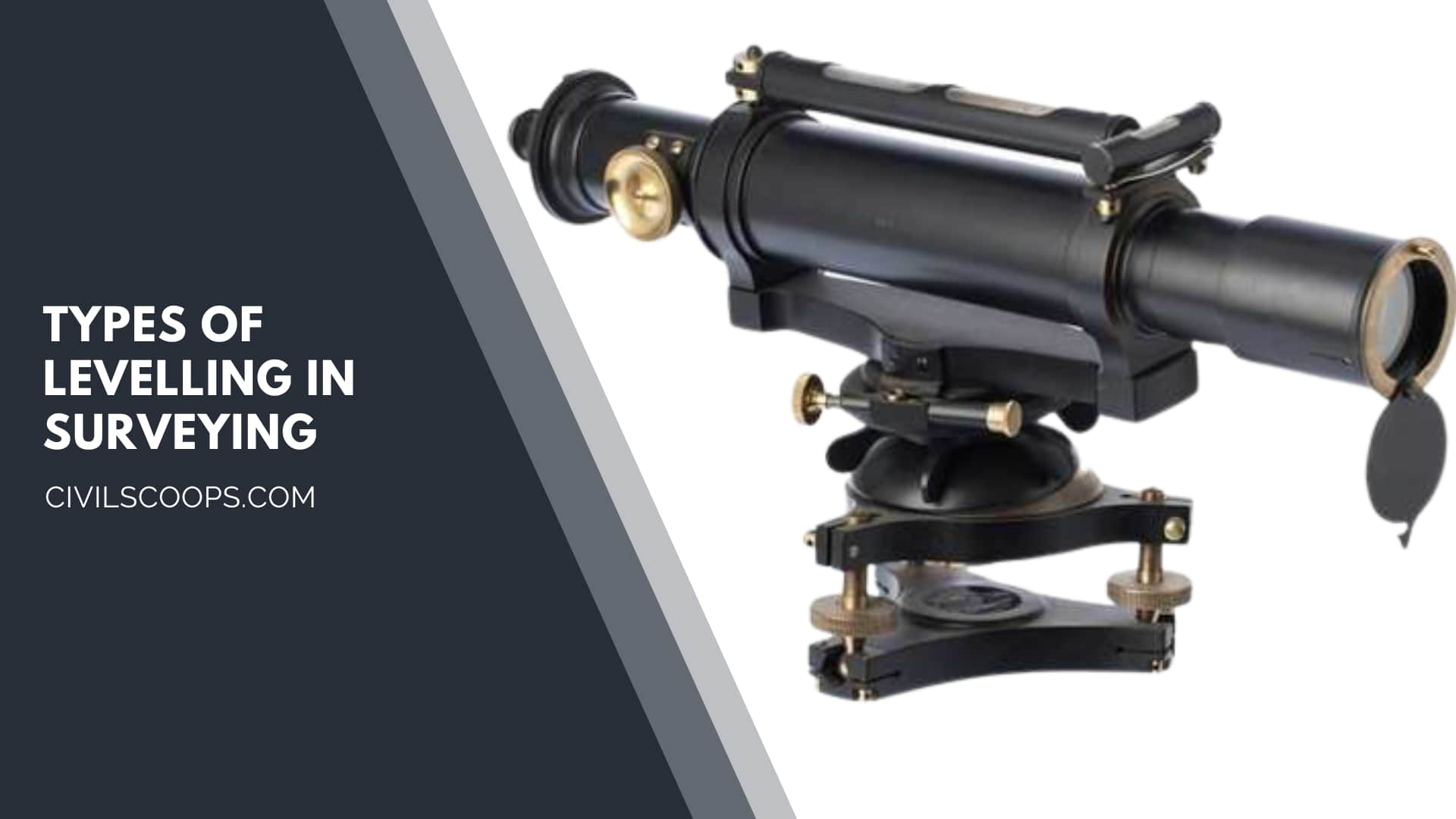
The Types of levelling which are used in surveying are as follows.
- Barometric Levelling.
- Trigonometric Levelling or Indirect Levelling.
- Spirit Levelling or Direct Levelling.
1. Barometric Levelling
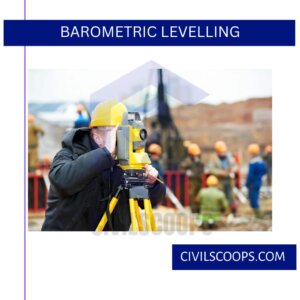
Barometric levelling is defined as the levelling which makes use of the phenomenon that the difference in the elevation between the two points which are located at different places is proportional to the difference in the atmospheric pressure at these points.
The Barometer instrument is used for measuring the difference in the elevation between the two points on the surface of the Earth is an old and well-known artist.
The Barometer instrument is used to measure Atmospheric pressure at any altitude. This type of levelling is rarely used in surveying work. Barometric levelling is generally used for reconnaissance or exploratory surveys.
2. Trigonometric Levelling
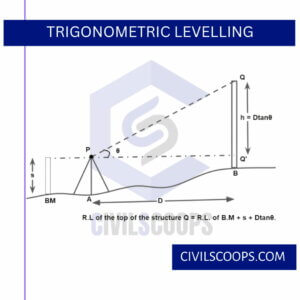
Trigonometric levelling is one of the simplest processes of levelling in which the elevation of the points is determined from the vertical angles and the horizontal distances which are measured on the field.
Trigonometric levelling is also known as Indirect levelling. It is the same as the length of any side of the triangle is determined from the basic trigonometric relations.
Also Read: What Is Cantilever | What Is Cantilever Footing | Design of the Cantilever Footing
3. Direct Levelling
It is the most commonly used method of levelling. In this method, measurements are observed directly from the levelling instrument. Based on the observation points and instrument positions direct levelling is divided into different types as follows:
3.1. Simple Leveling
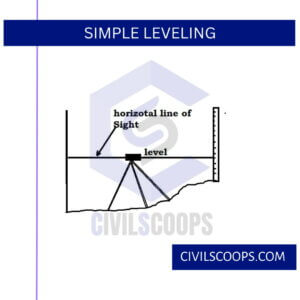
Simple levelling is a very easy process that consists of calculating the difference in the elevation between two points. The instrument is set up between the two points so that both points are visible.
The distance between the two points should not be too greater otherwise it is difficult to take the readings from both points. The Simple levelling process is only suitable when the points are closer to each other without any kind of obstacles between them.
The procedure of the simple levelling is as follows.
- Suppose, there are two points on the ground surface let them be A and B.
- The instrument can be set up anywhere but it is recommended to set the instrument approximately midway between the two points so as to eliminate errors in the instrument.
- Then level the instrument carefully and direct the telescope towards the staff which is held vertically at point A and focus it.
- Take the readings at which the horizontal hair appears to cut the staff. Now hold the staff vertically at point B.
- Direct the telescope on the staff which is held vertically at the point and focus it properly. Take the readings on point B and care should be taken that the bubble should be at the centre while taking readings.
While carrying out the levelling process the following point should be considered.
- Care should be taken that the bubble should be in the centre while taking readings.
- If the true difference of the level between the two points is required then it is necessary that the instrument should be set up exactly mid between both points.
- When the point is at a lower elevation the staff reading is greater and when the point is at a higher elevation the staff reading is smaller.
- When the staff is held at the lower point then the staff reading will be greater and the reduced level is less. If the staff point is on the higher point then the staff reading will be smaller and the reduced level is more.
3.2. Differential Levelling
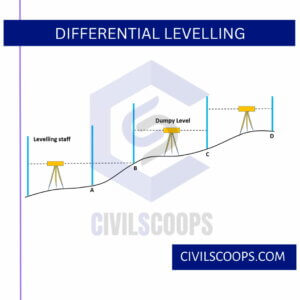
Differential levelling is used in surveying when it is required to determine the difference in the elevation between the two points which are too far apart from each other and the difference in the elevation between that two points is far great.
Differential levelling is used when there are some obstacles in levelling so that the points are not visible from one setup of the instrument. So it is necessary to set up the instrument at various locations and to work in a series of stages.
The differential levelling process is suitable when the distance between the two points is more.
3.3. Reciprocal Levelling
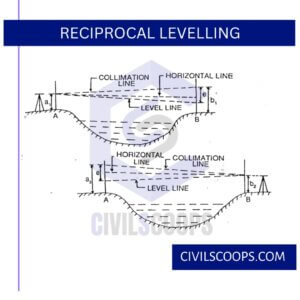
Reciprocal levelling is used when it is required to find an accurate difference in the level between the two points which are considered apart from each other.
The reciprocal levelling process is used when it is not suitable to set up the level between the two points due to any obstacle such as a river or pond etc.
The reciprocal levelling eliminates the error due to curvature and collimation. It also eliminates the error due to the line of collimation.
In this case, the instrument is set up on both sides of the bank of the river or valley and two sets of staff readings are taken by holding the staff on both banks.
3.4. Fly Levelling
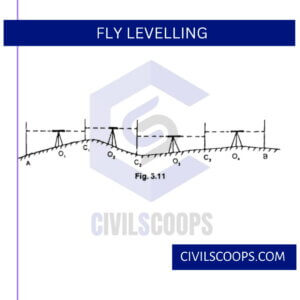
Fly levelling is the process in which only the backside and foresight readings are taken and there are not any intermediate sight readings taken in this type of levelling.
The purpose of the fly levelling is to connect the benchmark to the starting point of any project and it is used to establish the benchmarks.
The process of Fly levelling is used when the worksite is away from the benchmark. In this case, the surveyor starts the work with the backsight reading on the benchmark by setting up the instrument at a suitable point.
3.5. Profile Levelling
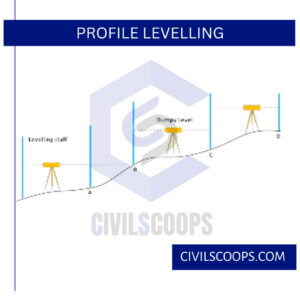
Profile levelling is the process of determining the elevation of the points at short measured intervals along a fixed line such as the centre line of a railway, highway, canal or sewer.
The fixed line may be a single straight line or it makes consists of a succession of straight lines. It is also known as longitudinal sectioning.
3.6. Precise Levelling
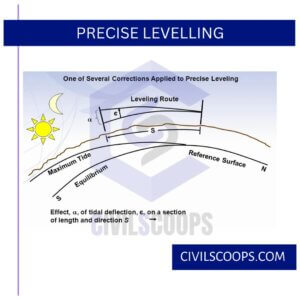
It is a type of levelling in surveying which is used for establishing benchmarks with very high precision at widely distant points. This type of surveying is conducted by the government agencies such as the great trigonometrical survey of India department for establishing benchmarks.
This kind of levelling required a highly refined and modern instrument which should be operated by a skilled technical person only.
3.7. Check Levelling
It is basically a method that is used to check a series of levels or readings which have been taken previously. At the end of each day work ok a line of level starting from the point and returning to the starting point is checked.
Advantages of Levelling in Surveying
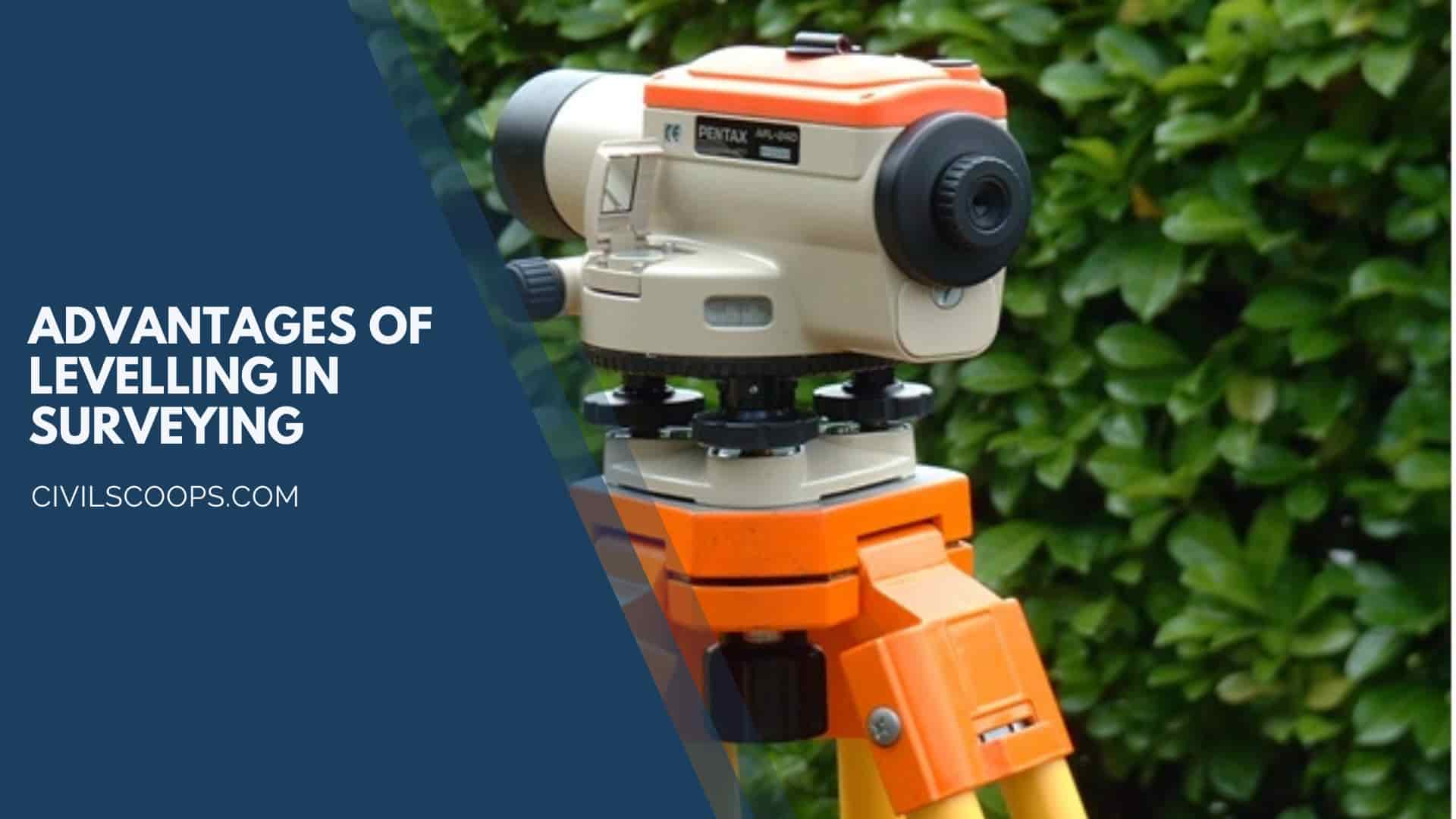
There are various advantages of levelling in surveying are as follows.
- Levelling helps to determine the elevation of the points on the surface of the ground.
- It is helpful while laying the centerline of the road.
- The data which is obtained from the process of levelling helps to understand the terrain of the ground.
- Levelling is very useful for designing structures.
Disadvantages of Levelling in Surveying
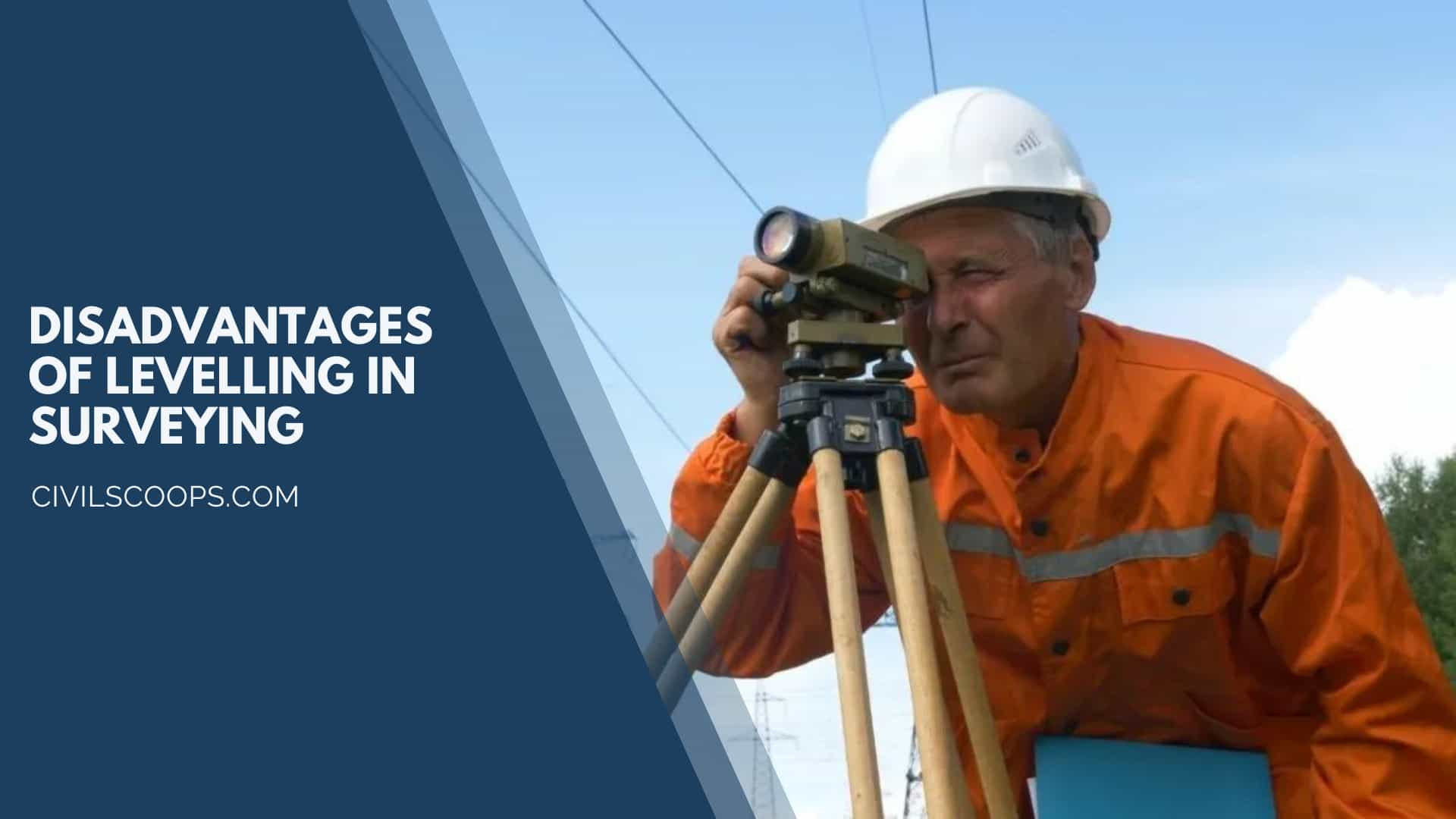
There are also some disadvantages of levelling in surveying which is as follows.
- The levelling process is very time-consuming.
- The levelling process required a skilled and Technical person.
- Plotting the levels on the map or sheet is a very complex process and required a lot of calculations.
[su_box title=”FAQ” style=”default” box_color=”#333333″ title_color=”#FFFFFF” radius=”3″ class=”” id=””]
What Is Levelling in Surveying?
Levelling or leveling is a branch of surveying, the object of which is to establish or. verify or measure the height of specified points relative to a datum. • It is widely used in cartography to measure geodetic height, and in construction. to measure height differences of construction artifacts.
What Is Reduced Level in Surveying?
Reduced level in surveying refers to equating elevations of survey points with reference to a common assumed datum. It is a vertical distance between survey point and adopted datum plane. Thus, it is considered as the base elevation which is used as reference to reckon heights or depths of other important places.
Method of Levelling in Surveying
There are three leveling techniques: differential, trigonometric, and barometric. Differential leveling is the most accurate of the three methods. With the instrument locked in position, readings are made on two calibrated staffs held in an upright position ahead of and behind the instrument.
Differential Levelling in Surveying
Differential leveling is a technique used to determine differences in elevation between points that are remote from each other. Differential leveling requires the use of a surveyor’s level together with graduated measuring rods. An elevation is a vertical distance above or below a referenced datum.
What Are the 3 Survey Methods?
Exploratory, descriptive, and causal are the three main types used in survey research. It helps to familiarize yourself with these types before designing your survey research.
What Is Rise and Fall Method in Levelling?
It consists of determining the difference of elevation between consecutive points by comparing each point after the first that immediately preceding it. The difference between there staff reading indicates a rise fall according to the staff reading at the point.
Importance of Levelling in Agriculture
Land leveling is critically important to improving surface irrigation uniformity and application efficiency. The cost of land leveling for new irrigation fields is usually estimated based on the soil type, the cut to fill ratio, and the total number of cubic yards to be cut.
What Is Reciprocal Levelling?
noun Surveying. leveling between two widely separated points in which observations are made in both directions to eliminate the effects of atmospheric refraction and the curvature of the earth.
[/su_box]
[su_note note_color=”#F2F2F2 ” text_color=”#333333″ radius=”3″ class=”” id=””]
Like this post? Share it with your friends!
Suggested Read –
- How to Calculate Steel in RCC Slab
- What Is Dampness | Requirements of an Ideal Material for Damp-Proofing | Materials Used for Damp-Proofing
- What Is Contour Interval | How to Find the Contour Interval | Uses of Contour Intervals in Surveying | Reading Contour Lines | What Is Importance of Topographic Maps
- What Is Chain Surveying | Principle of Chain Surveying | Procedure of Chain Surveying | Error in Chain Surveying | Advantages & Disadvantagesof Chain Surveying
- Soil Hydrometer | How Does a Soil Hydrometer Work | How to Read Hydrometer | What Does a Hydrometer Measure | Advantage, Disadvantages & Uses of Hydromete
[/su_note]
Originally posted 2023-02-25 12:25:11.
